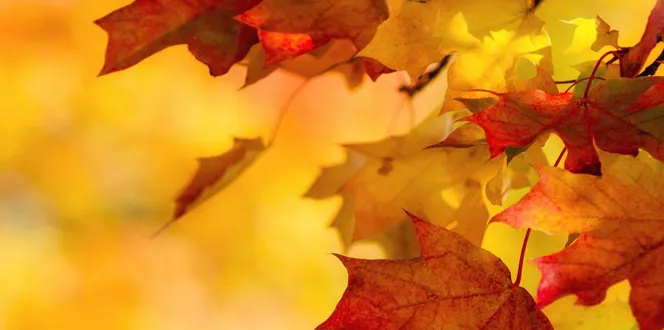Flowering trees and shrubs are more than just beautiful additions to your landscape — they are the vibrant heart of any garden, bringing color, fragrance, and life to residential yards. Their blossoms mark the changing of seasons, from the delicate pastels of spring to the bold hues of summer and fall, creating a dynamic visual appeal that transforms ordinary spaces into extraordinary ones.
Beyond their aesthetic allure, flowering trees and shrubs offer a range of benefits that enhance your outdoor living environment. They provide shade during hot summer months, helping to cool your home and reduce energy costs. Many flowering species also attract pollinators like bees, butterflies, and hummingbirds, supporting local ecosystems and promoting biodiversity. The presence of these plants can also increase property value, making them wise investments for any homeowner.
In addition to their beauty, flowering trees and shrubs can improve air quality by filtering pollutants and producing oxygen. Their root systems help prevent soil erosion, and some species are known for their ability to absorb excess water, reducing the risk of flooding in your yard. With so many advantages, it’s clear that these plants are much more than decorative — they contribute to the health and sustainability of your home and garden.
However, to enjoy the full benefits of these plants, learning how to care for flowering trees and shrubs throughout the year is crucial. Different species may require specific attention based on your growing zone. Here, we offer a comprehensive overview of best practices to help you maintain the health and vitality of your flowering trees and shrubs in every season.
Spring Flowering Tree & Shrub Care
As winter fades, starting the year off right when caring for your flowering trees and shrubs can ensure beautiful blooms.
- Fertilization: Early to mid-spring is the ideal time to fertilize your flowering trees and shrubs. Fertilizers help replenish nutrients in the soil, supporting healthy growth and vibrant blooms. Make sure to choose a slow-release fertilizer that suits the specific needs of your plants.
- Mulch: Apply a fresh layer of mulch around the base of your trees and shrubs to retain moisture, regulate soil temperature, and reduce weed growth. Learn more about the proper way to mulch your trees.
- Water: As the weather warms up, ensure your plants receive adequate water. Newly planted trees and shrubs need more frequent watering, while established plants should be watered deeply but less often.
- Prune: Pruning in early spring helps remove dead or damaged branches, promoting healthy growth. However, while considering the question, “When should I prune flowering shrubs?” Be cautious not to prune too early, as this can remove flower buds before they bloom.
Summer Flowering Tree & Shrub Care
Summer brings heat and potentially drought, which can stress flowering trees and shrubs. How do you take care of a flowering shrub during this time? These care tips should help.
- Water: Increase watering frequency during hot, dry periods. Deep watering is more effective than frequent, shallow watering.
- Mulch: Refresh the mulch layer if necessary, ensuring it remains at an optimal depth of 2-3 inches. This will help the soil retain moisture during the hot summer months.
- Prune: Summer is generally not the best time for heavy pruning, but light trimming can help maintain the shape of your shrubs. For more on summer pruning, check these resources on trimming shrubs and cutting tree limbs.
Fall Flowering Tree & Shrub Care
Fall is a transitional period that prepares your plants for winter. How do you take care of a flowering shrub or flowering tree during this changing season? These recommendations should help.
- Fertilization: If your trees and shrubs weren’t fertilized in the spring, use a slow-release fertilizer to help your plants build up the nutrients they’ll need to survive the winter and thrive in spring.
- Mulch: If necessary, add mulch to protect the roots from temperature fluctuations as the weather cools down.
- Water: Water your trees and shrubs well before the soil freezes to ensure they are well-hydrated going into winter.
- Prune: Light pruning can be done in fall to shape the shrubs, or you can wait until spring.
Winter Flowering Tree & Shrub Care
Winter care is about protection and preparation for the upcoming growing season.
- Fertilization: Fertilizing in winter is unnecessary, as plants don’t uptake nutrients when they’re dormant.
- Mulch: Check the mulch layer around your plants and add more if needed to protect the roots from freezing temperatures. Be careful not to over mulch. Limit the depth of mulch to 2-3 inches, and make sure not pile mulch against the trunk.
- Water: While plants need less water in winter, make sure they don’t dry out completely. Water during dry spells, especially before a freeze, to help insulate the roots.
- Pruning: What season should flowering trees be pruned? Winter is a good time for pruning many trees and shrubs, especially young trees, fruit trees, and certain spring-flowering plants. For specific advice, refer to this guide on winter tree pruning.
What Impacts An Early Bloom
Several factors can cause your trees and shrubs to bloom early, including unseasonably warm weather, unusual precipitation patterns, and climate change.
Early blooming can be risky, as subsequent frosts may damage the flowers. To protect early blooms, consider all of these seasonal tips on how to care for flowering trees and shrubs. Additionally, you may want to cover your plants during cold snaps and ensure they are well-mulched.
Best Flowering Trees & Shrub List
Choosing the right flowering trees and shrubs for your landscape can be daunting, but doing so helps you better learn how to care for flowering trees and shrubs. These resources on plant selection can help:
- Explore the best small flowering trees for your landscape.
- Discover the best flowering shrubs to add color and interest to your garden.
By following these seasonal care tips, you can enjoy a vibrant and healthy display of flowering trees and shrubs year-round.





